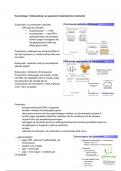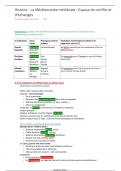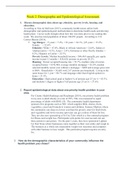Samenvatting
Samenvatting : Ondernemingsfinanciering & Vermogensmarkten TENTAMEN
Dit is een samenvatting voor het tentamen van O&V. Deze samenvatting bevat: Corporate Finance, Global edition -> H14 t/m 18, 20 t/m 28, 30 * Hoofdstuk 22 staat er in het grijs bij, aangezien deze geen onderdeel is van de leerstof voor het tentamen 2024 Geschreven in het Engels
[Meer zien]









